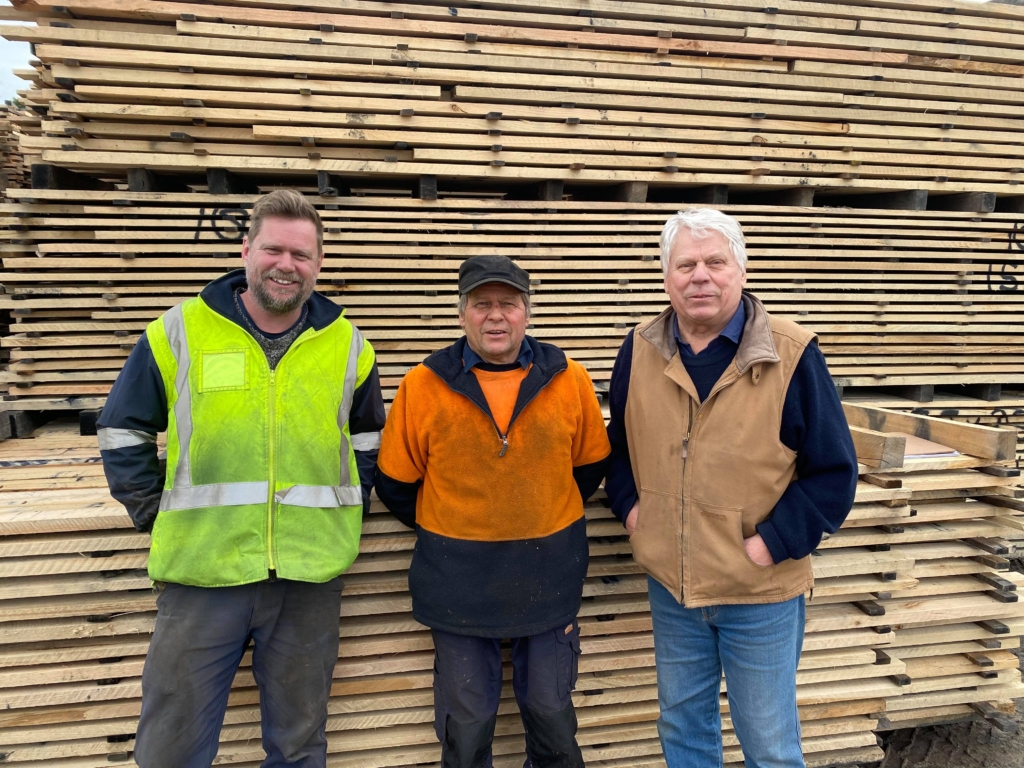 AUSTRALIA — Tasmania’s native forest logging sector is fretting over its future despite the federal government’s claims changes to environmental laws will ensure the industry’s sustainability. Prime Minister Anthony Albanese announced on Thursday that long-awaited reform of the country’s Environment Protection and Biodiversity Conservation (EPBC) Act would pass the Senate with the support of the Greens. The existing EPBC Act has long been considered outdated by politicians, business figures and conservationists alike, and has been blamed for years-long delays to decisions on large infrastructure projects. Tasmanian Greens Senator Nick McKim says his party achieved key concessions from the government on native forest logging, which will put approvals processes currently held by the states into the hands of the federal government. Sawmiller Matt Torenius told ABC Radio Hobart the changes have left him “upset and worried” and unsure what to tell his employees about their future.
AUSTRALIA — Tasmania’s native forest logging sector is fretting over its future despite the federal government’s claims changes to environmental laws will ensure the industry’s sustainability. Prime Minister Anthony Albanese announced on Thursday that long-awaited reform of the country’s Environment Protection and Biodiversity Conservation (EPBC) Act would pass the Senate with the support of the Greens. The existing EPBC Act has long been considered outdated by politicians, business figures and conservationists alike, and has been blamed for years-long delays to decisions on large infrastructure projects. Tasmanian Greens Senator Nick McKim says his party achieved key concessions from the government on native forest logging, which will put approvals processes currently held by the states into the hands of the federal government. Sawmiller Matt Torenius told ABC Radio Hobart the changes have left him “upset and worried” and unsure what to tell his employees about their future.
 The latest Global Wood Trends report – Softwood Lumber – Tariffs, Turbulence and New Trade Flows to 2030 – says from 2000 to 2024, European lumber output grew slowly at 0.4% per year but still outpaced domestic demand growth. This allowed Europe to expand exports overseas, a trend likely to continue as Russian and Canadian shipments remain constrained. …Production has expanded faster than demand, with exports rising from 10% of output in 2009 to 19% in 2024. Growth has been concentrated in Northern and Central Europe — led by Sweden, Finland, Germany, and Austria — where harvest levels are now close to structural limits. …Global Wood Trends concluded that Europe’s lumber market is entering a period of tightening supply and gradually recovering demand. While production growth is expected to shift toward Northern and Eastern Europe, overall expansion will be limited by structural harvest constraints in Central Europe. Stronger domestic consumption, combined with potentially higher US demand will likely support higher prices for logs and lumber.
The latest Global Wood Trends report – Softwood Lumber – Tariffs, Turbulence and New Trade Flows to 2030 – says from 2000 to 2024, European lumber output grew slowly at 0.4% per year but still outpaced domestic demand growth. This allowed Europe to expand exports overseas, a trend likely to continue as Russian and Canadian shipments remain constrained. …Production has expanded faster than demand, with exports rising from 10% of output in 2009 to 19% in 2024. Growth has been concentrated in Northern and Central Europe — led by Sweden, Finland, Germany, and Austria — where harvest levels are now close to structural limits. …Global Wood Trends concluded that Europe’s lumber market is entering a period of tightening supply and gradually recovering demand. While production growth is expected to shift toward Northern and Eastern Europe, overall expansion will be limited by structural harvest constraints in Central Europe. Stronger domestic consumption, combined with potentially higher US demand will likely support higher prices for logs and lumber. 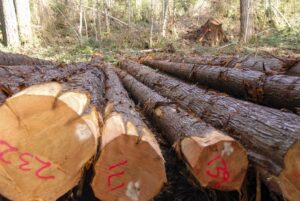 Sweden’s Green Business Index declined in the fourth quarter of 2025 as forestry and crop farming weakened, according to data from the Federation of Swedish Farmers. The total index fell to 100.7 from 106.5 in the previous quarter, marking a broad slowdown across several agricultural industries. The forestry subindex recorded the largest fall, dropping by 19 points to 97.6, its lowest level since spring 2020. The decline reflects weaker export demand, lower prices for sawn wood and pulp, and a soft U.S. dollar that reduced export revenues. New tariffs on Swedish wood products to the United States and a slower global economy further limited profitability. LRF reports that sawmills and pulp producers have experienced tightening margins, while forest owners face lower returns and are reducing harvesting activity.
Sweden’s Green Business Index declined in the fourth quarter of 2025 as forestry and crop farming weakened, according to data from the Federation of Swedish Farmers. The total index fell to 100.7 from 106.5 in the previous quarter, marking a broad slowdown across several agricultural industries. The forestry subindex recorded the largest fall, dropping by 19 points to 97.6, its lowest level since spring 2020. The decline reflects weaker export demand, lower prices for sawn wood and pulp, and a soft U.S. dollar that reduced export revenues. New tariffs on Swedish wood products to the United States and a slower global economy further limited profitability. LRF reports that sawmills and pulp producers have experienced tightening margins, while forest owners face lower returns and are reducing harvesting activity.  Japan’s housing starts rose 3.2% year-on-year in October 2025, defying market expectations of a 5.2% decline and reversing a 7.3% fall in September. It was the first annual increase since March, driven by rebounds in rented units (4.2% vs -8.2%), built-for-sale homes (14.8% vs -8.3%), and prefabricated housing (9.2% vs -0.4%). However, weakness persisted in owned homes (-8.2% vs -5.6%), while issued units slumped sharply (-36.3% vs 53.7%) and two-by-four homes also turned negative (-3.8% vs 2.1%). [END]
Japan’s housing starts rose 3.2% year-on-year in October 2025, defying market expectations of a 5.2% decline and reversing a 7.3% fall in September. It was the first annual increase since March, driven by rebounds in rented units (4.2% vs -8.2%), built-for-sale homes (14.8% vs -8.3%), and prefabricated housing (9.2% vs -0.4%). However, weakness persisted in owned homes (-8.2% vs -5.6%), while issued units slumped sharply (-36.3% vs 53.7%) and two-by-four homes also turned negative (-3.8% vs 2.1%). [END]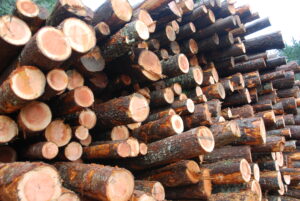 MOSCOW — Russia’s forestry sector could face a deep contraction next year as sanctions tighten, interest rates remain high and the ruble stays strong, Deputy Industry and Trade Minister Mikhail Yurin said Thursday. Addressing a Federation Council committee, Yurin said the industry has entered a “downward trend,” with the worst-case scenario pointing to a 20-30% drop in output in 2026. The ministry expects already falling production to continue declining into 2027 if geopolitical conditions worsen, Interfax quoted Yurin as saying. According to the Economic Development Ministry, wood-processing is among the weakest performers in Russia’s industrial landscape. Output fell 4.3% in the third quarter and the slump accelerated to 7.8% in October. …He said Russian timber exports have fallen by more than 20% since before the war, from $12.5 billion in 2021 to to $9.8 billion. Logging volumes are expected to hit a four-year low of 182 million cubic meters this year.
MOSCOW — Russia’s forestry sector could face a deep contraction next year as sanctions tighten, interest rates remain high and the ruble stays strong, Deputy Industry and Trade Minister Mikhail Yurin said Thursday. Addressing a Federation Council committee, Yurin said the industry has entered a “downward trend,” with the worst-case scenario pointing to a 20-30% drop in output in 2026. The ministry expects already falling production to continue declining into 2027 if geopolitical conditions worsen, Interfax quoted Yurin as saying. According to the Economic Development Ministry, wood-processing is among the weakest performers in Russia’s industrial landscape. Output fell 4.3% in the third quarter and the slump accelerated to 7.8% in October. …He said Russian timber exports have fallen by more than 20% since before the war, from $12.5 billion in 2021 to to $9.8 billion. Logging volumes are expected to hit a four-year low of 182 million cubic meters this year. China’s recent environmental policy shift is transforming the global recycled pulp market. After years of tightening restrictions on solid waste imports, China has now expanded its scope even further by banning certain types of recycled pulp. This development highlights the country’s ongoing goal to eliminate “foreign garbage” and improve the quality and sustainability of its locally produced paper. …In January 2021, China fully implemented the National Sword policy — a sweeping ban on most solid waste imports, including unsorted and recycled paper. …In October 2025, China took its environmental agenda a step further by targeting specific types of recycled pulp — particularly those processed through dry-milling techniques. …The new restrictions have rippled across the global paper recycling supply chain. Exporters that previously relied on China’s massive demand are scrambling to find alternative markets, while Chinese paper producers face delays and shortages in pulp supply.
China’s recent environmental policy shift is transforming the global recycled pulp market. After years of tightening restrictions on solid waste imports, China has now expanded its scope even further by banning certain types of recycled pulp. This development highlights the country’s ongoing goal to eliminate “foreign garbage” and improve the quality and sustainability of its locally produced paper. …In January 2021, China fully implemented the National Sword policy — a sweeping ban on most solid waste imports, including unsorted and recycled paper. …In October 2025, China took its environmental agenda a step further by targeting specific types of recycled pulp — particularly those processed through dry-milling techniques. …The new restrictions have rippled across the global paper recycling supply chain. Exporters that previously relied on China’s massive demand are scrambling to find alternative markets, while Chinese paper producers face delays and shortages in pulp supply.
 B.C.’s largest-ever forestry trade mission to Asia
B.C.’s largest-ever forestry trade mission to Asia




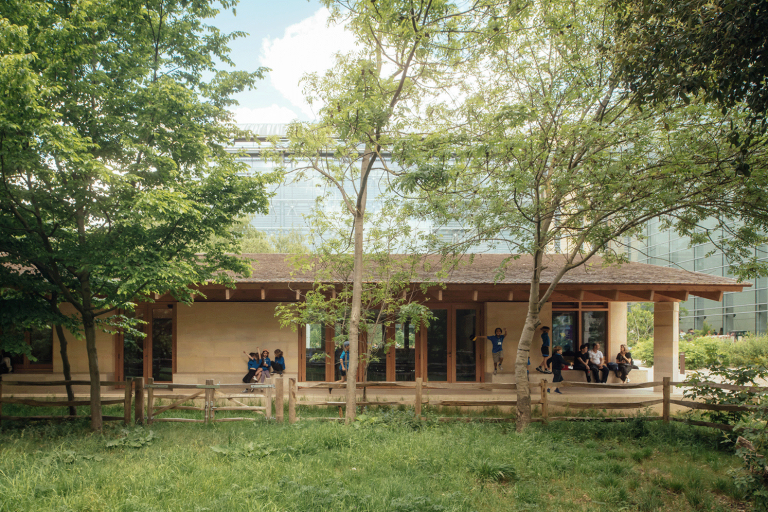
 Futamura, a Japanese manufacturer of cellulose films and packaging products, has announced a solution to help reduce the quantities of microplastics generated from glitter products. Microplastics are defined as plastic particles less than 5mm in size, which can be either intentionally manufactured at that size (primary microplastics) or created when larger plastic items break down (secondary microplastics). Glitter has been particularly criticised in recent years for its contribution to microplastic pollution in oceans and soil. According to Futamura, biodegradable glitter can be created from its NatureFlex materials [wood pulp], which will safely degrade in the environment it was disposed of after use without producing harmful microplastics. …Currently, glitter based on conventional plastics can still be sold into cosmetic applications due to a transition period granted under the EU’s Microplastics Regulation. However, once this period ends cosmetic applications will also be banned.
Futamura, a Japanese manufacturer of cellulose films and packaging products, has announced a solution to help reduce the quantities of microplastics generated from glitter products. Microplastics are defined as plastic particles less than 5mm in size, which can be either intentionally manufactured at that size (primary microplastics) or created when larger plastic items break down (secondary microplastics). Glitter has been particularly criticised in recent years for its contribution to microplastic pollution in oceans and soil. According to Futamura, biodegradable glitter can be created from its NatureFlex materials [wood pulp], which will safely degrade in the environment it was disposed of after use without producing harmful microplastics. …Currently, glitter based on conventional plastics can still be sold into cosmetic applications due to a transition period granted under the EU’s Microplastics Regulation. However, once this period ends cosmetic applications will also be banned.
 The return of cold and snow at the close of the year typically signal the end of the wildfire season. …Zombie fires, sometimes betrayed by a plume of steam emerging from the bubbling ground in the frozen forest, were once a rare occurrence in the boreal regions that stretch across the far north through Siberia, Canada and Alaska. But in a rapidly heating world, they are becoming increasingly common. The overwintering burns are small – and often hard to detect – but they are transforming fires into multi-year events. …“It is a massive problem,” says Lori Daniels, a professor at the University of BC. Current estimates show that only about 15% of the northern hemisphere is underlain by permafrost, yet these frozen soils contain roughly twice as much carbon than is now in the atmosphere. By burning slowly and at a lower temperature, they release vastly more particulate pollution and greenhouse gas emissions than flaming fires.
The return of cold and snow at the close of the year typically signal the end of the wildfire season. …Zombie fires, sometimes betrayed by a plume of steam emerging from the bubbling ground in the frozen forest, were once a rare occurrence in the boreal regions that stretch across the far north through Siberia, Canada and Alaska. But in a rapidly heating world, they are becoming increasingly common. The overwintering burns are small – and often hard to detect – but they are transforming fires into multi-year events. …“It is a massive problem,” says Lori Daniels, a professor at the University of BC. Current estimates show that only about 15% of the northern hemisphere is underlain by permafrost, yet these frozen soils contain roughly twice as much carbon than is now in the atmosphere. By burning slowly and at a lower temperature, they release vastly more particulate pollution and greenhouse gas emissions than flaming fires.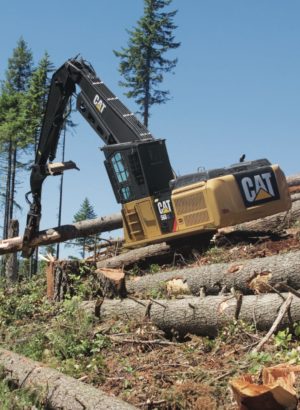 The timber industry built around the Tongass National Forest in Alaska got a boost from the Trump administration’s latest trade deal with China. In settling part of its trade battles, China agreed to accept imports of US sawlogs for the first time since banning them in March due to worries about insect pests. The resumption of exports — effective Nov. 12 — would help companies like Alcan Forest Products in Ketchikan, which for years has sold unprocessed logs to China. The latest agreement lasts one year, said Tessa Axelson, executive director of the Alaska Forest Association. A 10% tariff on products from both countries would still apply. …Southeast Alaska’s timber industry relies heavily on the nearly 17-million-acre Tongass, although most of the forest is off-limits to logging. Federal law allows the export of unprocessed logs, a practice long banned elsewhere to protect the domestic lumber processing industry. [to access the full story an E&ENews subscription is required]
The timber industry built around the Tongass National Forest in Alaska got a boost from the Trump administration’s latest trade deal with China. In settling part of its trade battles, China agreed to accept imports of US sawlogs for the first time since banning them in March due to worries about insect pests. The resumption of exports — effective Nov. 12 — would help companies like Alcan Forest Products in Ketchikan, which for years has sold unprocessed logs to China. The latest agreement lasts one year, said Tessa Axelson, executive director of the Alaska Forest Association. A 10% tariff on products from both countries would still apply. …Southeast Alaska’s timber industry relies heavily on the nearly 17-million-acre Tongass, although most of the forest is off-limits to logging. Federal law allows the export of unprocessed logs, a practice long banned elsewhere to protect the domestic lumber processing industry. [to access the full story an E&ENews subscription is required]

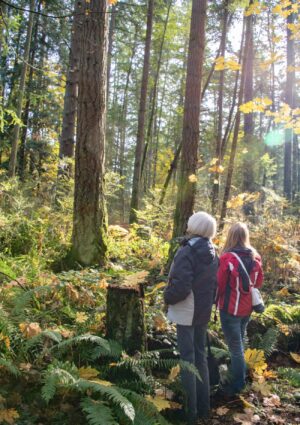 The European Parliament has approved measures to simplify the EU Deforestation Regulation adopted in 2023, which aims to ensure that products sold in the EU are not sourced from deforested land, according to the European Parliament. The new position grants companies an additional year to comply with the regulation. Large operators and traders must apply the obligations from 30 December 2026, and micro and small enterprises from 30 June 2027. The extension is designed to support a smooth transition and allow upgrades to the IT system used for electronic due diligence statements. Parliament agreed that the responsibility for submitting due diligence statements should rest with businesses that first place products on the EU market, not with later traders. Micro and small primary operators will now be required to file only a single simplified declaration instead of full due diligence reports.
The European Parliament has approved measures to simplify the EU Deforestation Regulation adopted in 2023, which aims to ensure that products sold in the EU are not sourced from deforested land, according to the European Parliament. The new position grants companies an additional year to comply with the regulation. Large operators and traders must apply the obligations from 30 December 2026, and micro and small enterprises from 30 June 2027. The extension is designed to support a smooth transition and allow upgrades to the IT system used for electronic due diligence statements. Parliament agreed that the responsibility for submitting due diligence statements should rest with businesses that first place products on the EU market, not with later traders. Micro and small primary operators will now be required to file only a single simplified declaration instead of full due diligence reports.

 Britain’s reliance on burning wood to generate electricity has reached record highs, even as the government moves to curb the controversial use of biomass power. The latest figures supplied by the owner of the giant Drax biomass plant in North Yorkshire have revealed that power generated from burning biomass wood pellets provided 9% of the UK’s electricity in July, its largest ever monthly share. Weeks later, biomass provided almost a fifth (17%) of the UK’s electricity for the first time during one morning in September when renewable energy resources were particularly low. Britain’s record reliance on biomass generation has reached new heights as the government set out its plans to dramatically reduce the controversial energy source under a new subsidy agreement with the FTSE 250 owner of the Drax power plant.
Britain’s reliance on burning wood to generate electricity has reached record highs, even as the government moves to curb the controversial use of biomass power. The latest figures supplied by the owner of the giant Drax biomass plant in North Yorkshire have revealed that power generated from burning biomass wood pellets provided 9% of the UK’s electricity in July, its largest ever monthly share. Weeks later, biomass provided almost a fifth (17%) of the UK’s electricity for the first time during one morning in September when renewable energy resources were particularly low. Britain’s record reliance on biomass generation has reached new heights as the government set out its plans to dramatically reduce the controversial energy source under a new subsidy agreement with the FTSE 250 owner of the Drax power plant.
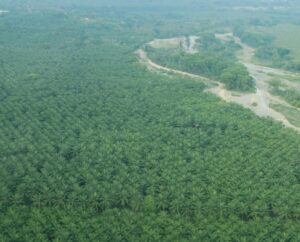 As he officially opened COP30, Brazil’s president, Lula Inacio da Silva said “the world will finally be able to say that it truly knows the reality of the Amazon”. …Last year the biggest cause of forest loss in the Amazon was fires, which were ignited to clear land for agricultural expansion or illegal mining. Despite a pledge made at COP26 in Glasgow in 2021 to halt and reverse deforestation by 2030, another 8.1 million hectares of forest were lost globally last year. Lula called for a consensus on a roadmap to deliver on the Glasgow deforestation promise. …But while more than 90 countries supported a deforestation roadmap, opposition from the likes of Saudi Arabia, Russia and India meant deforestation failed to make it to the final agreement, and COP president Andre Correa do Lago said Brazil would continue to work on developing one over the next year, to present at COP 31 in Turkey.
As he officially opened COP30, Brazil’s president, Lula Inacio da Silva said “the world will finally be able to say that it truly knows the reality of the Amazon”. …Last year the biggest cause of forest loss in the Amazon was fires, which were ignited to clear land for agricultural expansion or illegal mining. Despite a pledge made at COP26 in Glasgow in 2021 to halt and reverse deforestation by 2030, another 8.1 million hectares of forest were lost globally last year. Lula called for a consensus on a roadmap to deliver on the Glasgow deforestation promise. …But while more than 90 countries supported a deforestation roadmap, opposition from the likes of Saudi Arabia, Russia and India meant deforestation failed to make it to the final agreement, and COP president Andre Correa do Lago said Brazil would continue to work on developing one over the next year, to present at COP 31 in Turkey.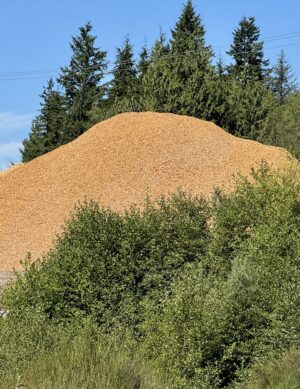 BRUSSELS — The European Commission has unveiled a new plan to end the dominance of planet-heating fossil fuels in Europe’s economy — and replace them with trees. The
BRUSSELS — The European Commission has unveiled a new plan to end the dominance of planet-heating fossil fuels in Europe’s economy — and replace them with trees. The  Africa’s forests have turned from a carbon sink into a carbon source, according to research that underscores the need for urgent action to save the world’s great natural climate stabilisers. The alarming shift, which has happened since 2010, means all of the planet’s three main rainforest regions – the South American Amazon, south-east Asia and Africa – are now part of the problem. Human activity is the primary cause of the problem. Farmers are clearing more land for food production. Infrastructure projects and mining are exacerbating the loss of vegetation and global heating – caused by the burning of gas, oil and coal – thereby degrading the resilience of ecosystems. …The worst affected were the tropical moist broadleaf forests in Democratic Republic of Congo, Madagascar and parts of west Africa. The study,
Africa’s forests have turned from a carbon sink into a carbon source, according to research that underscores the need for urgent action to save the world’s great natural climate stabilisers. The alarming shift, which has happened since 2010, means all of the planet’s three main rainforest regions – the South American Amazon, south-east Asia and Africa – are now part of the problem. Human activity is the primary cause of the problem. Farmers are clearing more land for food production. Infrastructure projects and mining are exacerbating the loss of vegetation and global heating – caused by the burning of gas, oil and coal – thereby degrading the resilience of ecosystems. …The worst affected were the tropical moist broadleaf forests in Democratic Republic of Congo, Madagascar and parts of west Africa. The study,  In response to an article published by The Guardian regarding our Canadian sustainable biomass operations, Miguel Veiga-Pestana, Drax’s Chief Sustainability Officer, wrote this response: The environmental non-profit Stand.earth fails to see the wood from the trees when it comes to the Canadian forestry industry and Drax’s limited role within it (
In response to an article published by The Guardian regarding our Canadian sustainable biomass operations, Miguel Veiga-Pestana, Drax’s Chief Sustainability Officer, wrote this response: The environmental non-profit Stand.earth fails to see the wood from the trees when it comes to the Canadian forestry industry and Drax’s limited role within it (

 A new
A new 

 Brazil’s COP30 presidency pushed through a compromise climate deal on Saturday that would boost finances for poor nations coping with global warming but omitted any mention of the fossil fuels driving it. In securing the accord, Brazil had attempted to demonstrate global unity in addressing climate change impacts even after the world’s biggest historic emitter, the United States, declined to send an official delegation. But the agreement, which landed in overtime after two weeks of contentious negotiations in the Amazon city of Belém, exposed deep rifts over how future climate action should be pursued. …After tense overnight negotiations, the EU agreed on Saturday morning not to block a final deal but said it did not agree with the conclusion. …Panama’s climate negotiator, Juan Carlos Monterrey Gómez, said “A climate decision that cannot even say ‘fossil fuels’ is not neutrality, it is complicity. And what is happening here transcends incompetence,” he said.
Brazil’s COP30 presidency pushed through a compromise climate deal on Saturday that would boost finances for poor nations coping with global warming but omitted any mention of the fossil fuels driving it. In securing the accord, Brazil had attempted to demonstrate global unity in addressing climate change impacts even after the world’s biggest historic emitter, the United States, declined to send an official delegation. But the agreement, which landed in overtime after two weeks of contentious negotiations in the Amazon city of Belém, exposed deep rifts over how future climate action should be pursued. …After tense overnight negotiations, the EU agreed on Saturday morning not to block a final deal but said it did not agree with the conclusion. …Panama’s climate negotiator, Juan Carlos Monterrey Gómez, said “A climate decision that cannot even say ‘fossil fuels’ is not neutrality, it is complicity. And what is happening here transcends incompetence,” he said. While the summit launched new financial instruments and strengthened the recognition of Indigenous rights, the final binding text is conspicuously silent on the one commitment that matters most right now: a concrete, mandatory roadmap to halt deforestation. …The Brazilian Presidency pushed hard for two ambitious roadmaps: one to phase out fossil fuels and one to halt deforestation. The strategy was to link them, acknowledging the obvious: we cannot save the Amazon if the world keeps warming. …The UN Framework Convention on Climate Change process proved unable to digest the complexity of the forest–climate nexus. We have effectively moved from a consensus-based approach to a plurilateral one, where progress rests on voluntary clubs of nations rather than global law. …If the political outcome disappointed, the financial and rights-based elements provide a measure of hope: The Tropical Forests Forever Faculty—a mechanism that pays nations for standing forests as an asset class, not just for avoided deforestation.
While the summit launched new financial instruments and strengthened the recognition of Indigenous rights, the final binding text is conspicuously silent on the one commitment that matters most right now: a concrete, mandatory roadmap to halt deforestation. …The Brazilian Presidency pushed hard for two ambitious roadmaps: one to phase out fossil fuels and one to halt deforestation. The strategy was to link them, acknowledging the obvious: we cannot save the Amazon if the world keeps warming. …The UN Framework Convention on Climate Change process proved unable to digest the complexity of the forest–climate nexus. We have effectively moved from a consensus-based approach to a plurilateral one, where progress rests on voluntary clubs of nations rather than global law. …If the political outcome disappointed, the financial and rights-based elements provide a measure of hope: The Tropical Forests Forever Faculty—a mechanism that pays nations for standing forests as an asset class, not just for avoided deforestation.
